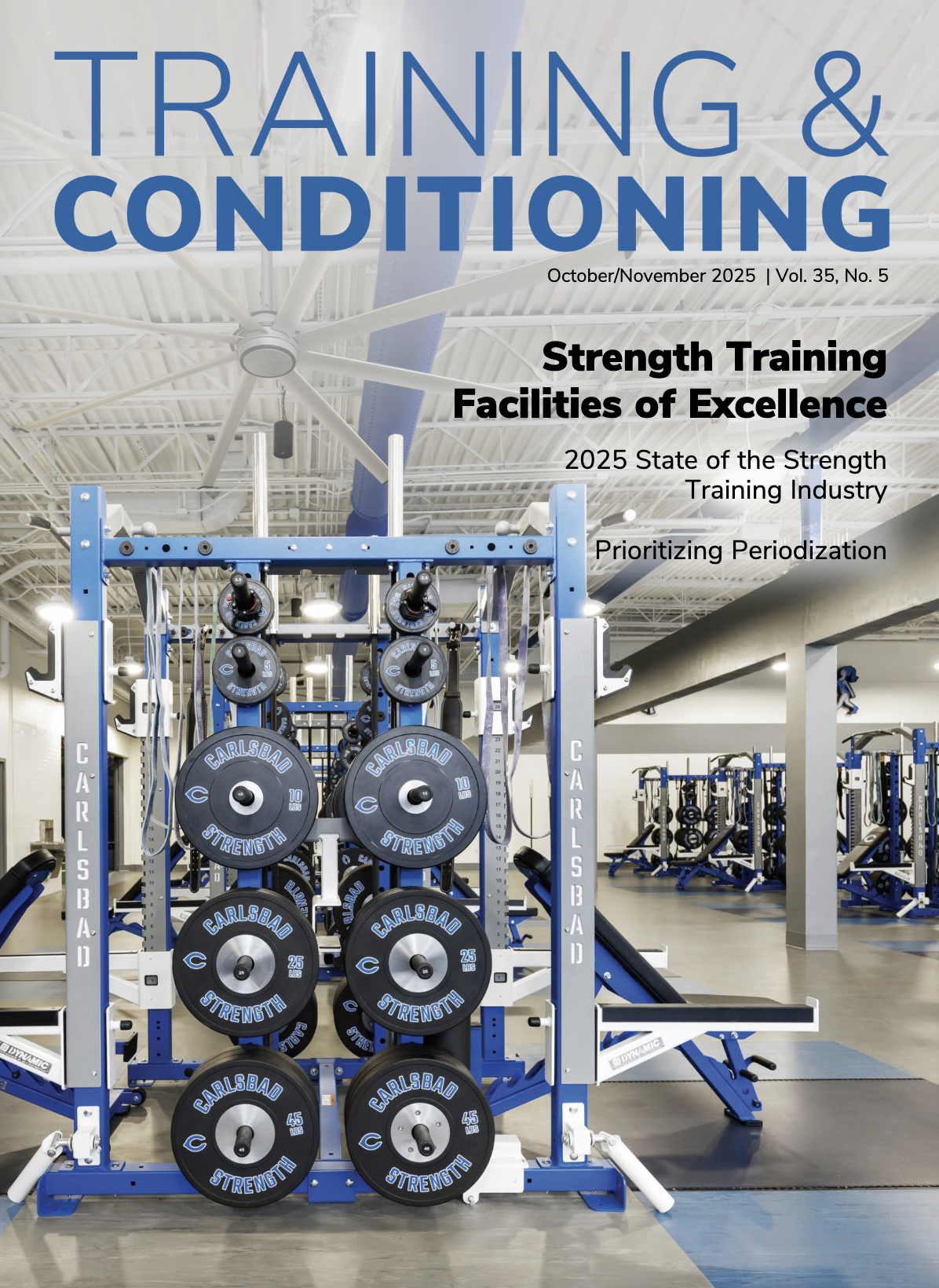Jun 12, 2024Q&ATC with NYSATA president Lauren Stephenson, MA, ATC
The New York State Athletic Trainers’ Association (NYSATA) named Lauren Stephenson, athletic trainer at SUNY Oneonta Athletics, as the president of the organization in November 2022.
Stephenson decided to go into athletic training as it combined her love of medicine, specifically emergency medicine, with sports and being a part of a team. She enjoys making a difference in her patients’ lives and is deeply invested in how her athlete-patients are doing on and off the field and court. Her involvement in NYSATA began because of her interest in public perception and recognition of athletic trainers. She joined the organization in 2011 and has been involved in various public relations projects, lobby days, and letter-writing campaigns on behalf of the governmental affairs committee.
She spoke with Training & Conditioning magazine to discuss the NYSATA under her leadership, and the overall athletic training industry.
Training & Conditioning: Describe the current state of athletic training in New York State. What are some key developments or challenges the field is facing?
 Lauren Stephenson: New York was happy to have passed our Athletic Training Licensure bill in December of 2022 which will be enacted in December of 2025. This bill establishes high standards for athletic trainers through a licensing process and ensures that all practitioners meet a minimum set of qualifications. It also requires that athletic trainers in NY are certified by the BOC, and therefore have undergone rigorous training and continuing education to elevate the standard of care for the physically active and reduce the risk of injury or harm. The passing of our licensure bill updated the law to reflect the evolution of the profession and expanded the scope of practice as well as added ATs to the list of mandated reporters of child abuse or maltreatment.
Lauren Stephenson: New York was happy to have passed our Athletic Training Licensure bill in December of 2022 which will be enacted in December of 2025. This bill establishes high standards for athletic trainers through a licensing process and ensures that all practitioners meet a minimum set of qualifications. It also requires that athletic trainers in NY are certified by the BOC, and therefore have undergone rigorous training and continuing education to elevate the standard of care for the physically active and reduce the risk of injury or harm. The passing of our licensure bill updated the law to reflect the evolution of the profession and expanded the scope of practice as well as added ATs to the list of mandated reporters of child abuse or maltreatment.
We are currently working on other legislative efforts to ensure public safety with updates on school concussion management and requirements for CPR/AED training in youth league sports. We are also working towards legislation that protects ATs who travel into NY so that they can provide care to their teams and/or athletes.
Beyond the legislative efforts, we continue to seek fair and adequate compensation for ATs throughout the state.
T&C: With the ongoing concerns about athlete safety and injury prevention, what initiatives or programs is NYSATA spearheading to ensure the highest standards of care for athletes across the state?
![]() Stephenson: Beyond obtaining licensure, one of our largest statewide efforts right now is in our partnership with the Brain Injury Association of New York State (BIANYS) to provide Concussion Outreach Prevention Education (COPE) to the entire state. Providing programs that educate all stakeholders on the safe recognition and management of concussions is key to preventing catastrophic outcomes. Student-athletes specifically need additional support to return to a learning environment that requires support from various health care and educational offices to ensure their health and wellbeing. Additionally, NYSATA continues to support bills for CPR training & AEDs at various levels of sport.
Stephenson: Beyond obtaining licensure, one of our largest statewide efforts right now is in our partnership with the Brain Injury Association of New York State (BIANYS) to provide Concussion Outreach Prevention Education (COPE) to the entire state. Providing programs that educate all stakeholders on the safe recognition and management of concussions is key to preventing catastrophic outcomes. Student-athletes specifically need additional support to return to a learning environment that requires support from various health care and educational offices to ensure their health and wellbeing. Additionally, NYSATA continues to support bills for CPR training & AEDs at various levels of sport.
T&C: In your opinion, what are some of the most pressing legislative or regulatory issues facing athletic trainers in New York State today? How is NYSATA advocating for its members on these fronts?
Stephenson: While a large hurdle has been overcome with our state licensure passed, there is always more work to be done in terms of implementation of that licensing law with rules and regulations as well as for future legislation.
NYSATA is always advocating for athletic trainers in NY. We have a very active governmental affairs committee that works closely with our lobbyists to develop strategies for improving the current ability to practice as well as the outlook for ATs in NY. Currently, we are working on passing a bill that allows ATs from other states to travel into NY and treat their athletes while they are here which has major implications for collegiate, professional, and Olympic sports.
T&C: Looking ahead, what do you envision for the future of athletic training in New York State? Are there any specific goals or initiatives that NYSATA is working towards to advance the profession and better serve athletes and communities statewide?
Stephenson: There are very few healthcare professionals who see their patients daily over the years and cannot only identify and mitigate injury risk but manage emergencies and treat and rehabilitate injury and illness as they occur. ATs develop long-standing relationships, not only with their patients but create a network of providers to ensure optimal care through their referral network and collaboration with supervising physicians.
» ALSO SEE: Practical programming for young strength coaches
Athletic trainers should be able to provide this kind of care to their physically active patients and be recognized for their unique set of skills as healthcare providers. Future efforts to allow for third-party reimbursement may be key in creating employment opportunities as well as improving salaries. Having athletic trainers in any practice setting could only enhance the quality of care and improve the performance of the physically active. NYSATA is committed to advancing the profession of athletic training and has been able to do so only through the efforts of our leadership. We look forward to continuing our momentum in Albany this legislative session and encourage our members to join us in these efforts as we are all NYSATA.


